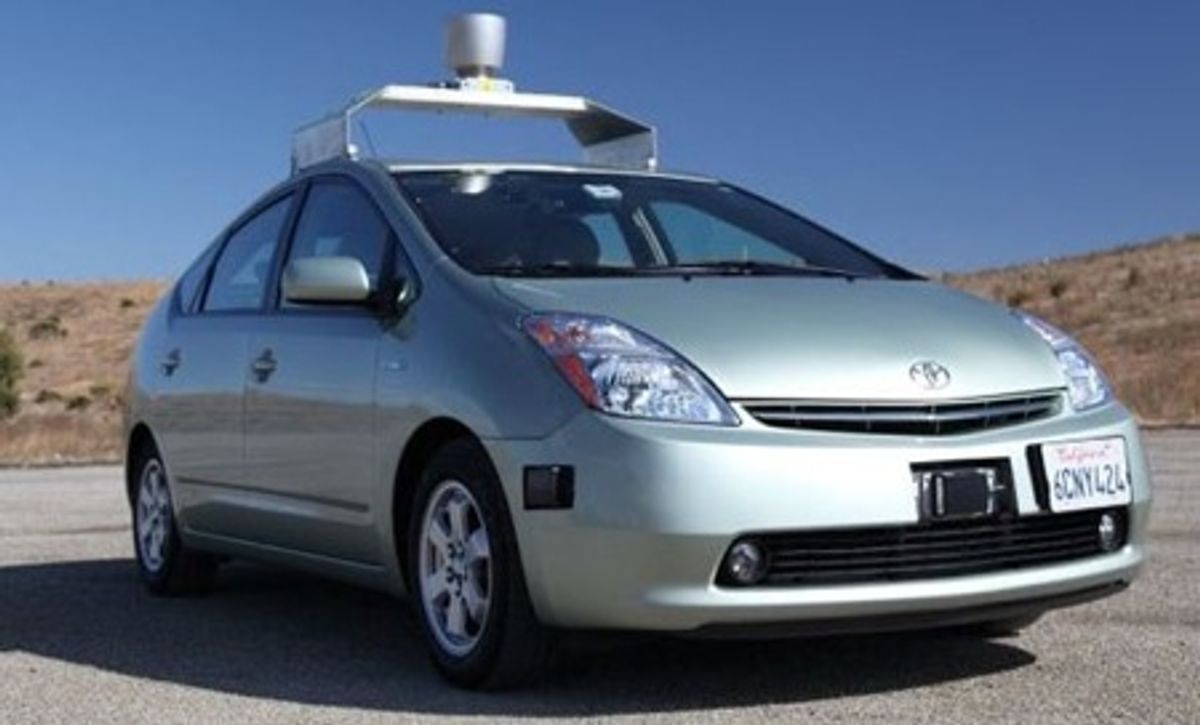Remember 5 years ago when a bunch of robotic cars managed to navigate through the desert all by themselves? And remember 3 years ago when a bunch of robotic cars managed to navigate through a (fake) urban area all by themselves? Well, today it’s the future, and autonomous robotic cars from Google have already logged 140,000 miles on busy, complex city streets and highways with only occasional human intervention, and 1,000 miles without any human control whatsoever.
Writing about this kind of thing makes me all tingly, because ever since I saw that autonomous Passat park itself at Stanford a year ago, it’s become clear that robotic cars aren’t some far-off futuristic dream, but that this technology is actually achievable in the near term. I mean, consider how much time you spend in your car effectively doing nothing, and then think about how much things would change if you could be productive (or asleep) instead. And of course, it’s not just that: autonomous cars have the potential to reduce traffic by driving closer together, drastically improve gas mileage with cooperative drafting, and (most importantly) significantly reduce the number of car accidents, which cause 1.2 million fatalities worldwide and exponentially more injuries plus untold emotional (and financial) trauma.
On to the cars themselves. Besides the big honkin’ LIDAR system mounted on the roof, the rest of the equipment is fairly low-key… There’s a position sensor mounted on the wheels, some small radar sensors in the bumpers, and a video camera in front of the rear view mirror to detect stop lights, stop signs, pedestrians, and bicyclists. The real trick, though, seems to be that Google sends out manned scout cars ahead of the autonomous ones to map the route (lane markers, etc.) in detail. You might think Google’s crazy to rely on driving down every single road to make autonomous driving viable, but a.) they could just have the car force you to take over if it reaches an unmapped area (perhaps making a map as it goes for later use, and b.) have you seen Street View?
Google has also included some interesting user interface options… Like, you can select from four different driving ‘personalities’ for your car to exhibit, from cautious to aggressive, although honestly I’m not sure why this is useful. Also, the car speaks to you in a “pleasant female voice” to let you know that’s it’s slowing for crosswalks and such.
So, it seems like 99% of the time, Google’s cars are completely capable of driving themselves, which is totally awesome. The tricky part, though, is that last 1%. That’s the most dangerous percent, the unpredictable percent, the percent that causes accidents whether a human is driving or not, and why human still have to be paying attention 100% of the time. The NY Times article talks about two specific circumstances when a human had to take over during their demo: “once when a bicyclist ran a red light and again when a car in front stopped and began to back into a parking space.” My guess is that programming the car to be able to deal with another car in front backing up is certainly possible. A bicyclist running a red light would be more difficult, but I’m optimistic, even to the extent that the robot car would be able to do a better job of avoiding an accident than a human car. Humans tend to assume that other cars (and to some extent bicyclists, pedestrians, etc.) obey traffic laws. When you’re driving down a two lane road and another car approaches, you assume that that car is going to stay in its lane. If it doesn’t, well, maybe you have time to react… But a robot is much better at making complex decisions in a split second, which if you remember, is what Shelley is all about. It’s worth noting that the only accident in 140,000 miles of driving occurred when somebody rear-ended one of the vehicles that was stopped at a red light, proving conclusively that robots are safer drivers than humans.
[ Google Blog ] via [ NY Times ]
Thanks Stark!
Evan Ackerman is a senior editor at IEEE Spectrum. Since 2007, he has written over 6,000 articles on robotics and technology. He has a degree in Martian geology and is excellent at playing bagpipes.





